You know what's criminally underrated in Filipino cuisine? Banana blossoms! I absolutely fell in love with puso ng saging the first time my Lola prepared it adobo-style. There's something good about how this often-discarded part of the banana plant transforms into this incredibly meaty, tender dish that soaks up all the garlicky, vinegary goodness of adobo.
Every time I slice into a fresh banana blossom, that subtle crimson color and layered petals remind me of unfolding a delicious secret that most people just walk right past. Once you try this Adobong Puso ng Saging, you'll never look at a banana tree the same way again. It's sustainable cooking at its finest. We're literally turning what others consider garden waste into pure comfort food gold.
Let me show you how to make this Filipino classic that's sure to become a regular at your table.
Jump to:
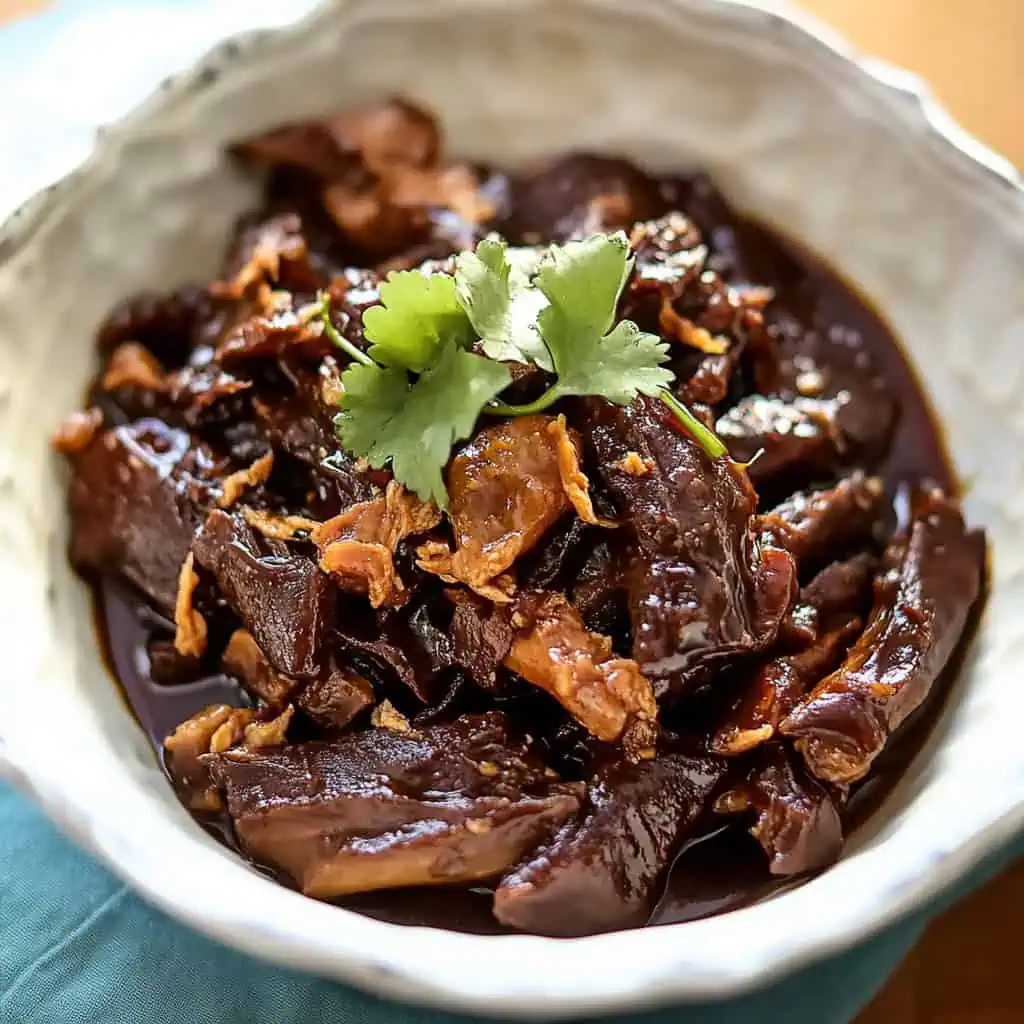
Why You'll Love This Recipe
- Unique ingredient that transforms into a meaty, tender delicacy
- Perfect balance of savory and tangy flavors
- Budget-friendly yet nutritious meal
- Zero-waste cooking using often overlooked parts of the banana plant
- Rich in fiber, vitamins, and minerals
Ingredients
The ingredients in this Adobong Puso ng Saging create magic through their thoughtful combination. The banana blossom provides a meaty texture that absorbs flavors beautifully, while fatty pork adds richness and depth. Garlic and shallots create an aromatic foundation essential to Filipino cooking.
The signature adobo combination of soy sauce and vinegar delivers that perfect tangy-savory balance, soy sauce brings umami depth while vinegar tenderizes the banana blossom and cuts through the fattiness of the pork.
This harmonious blend transforms a humble banana plant part into a satisfying dish that exemplifies Filipino cuisine's knack for sustainable, flavorful cooking.
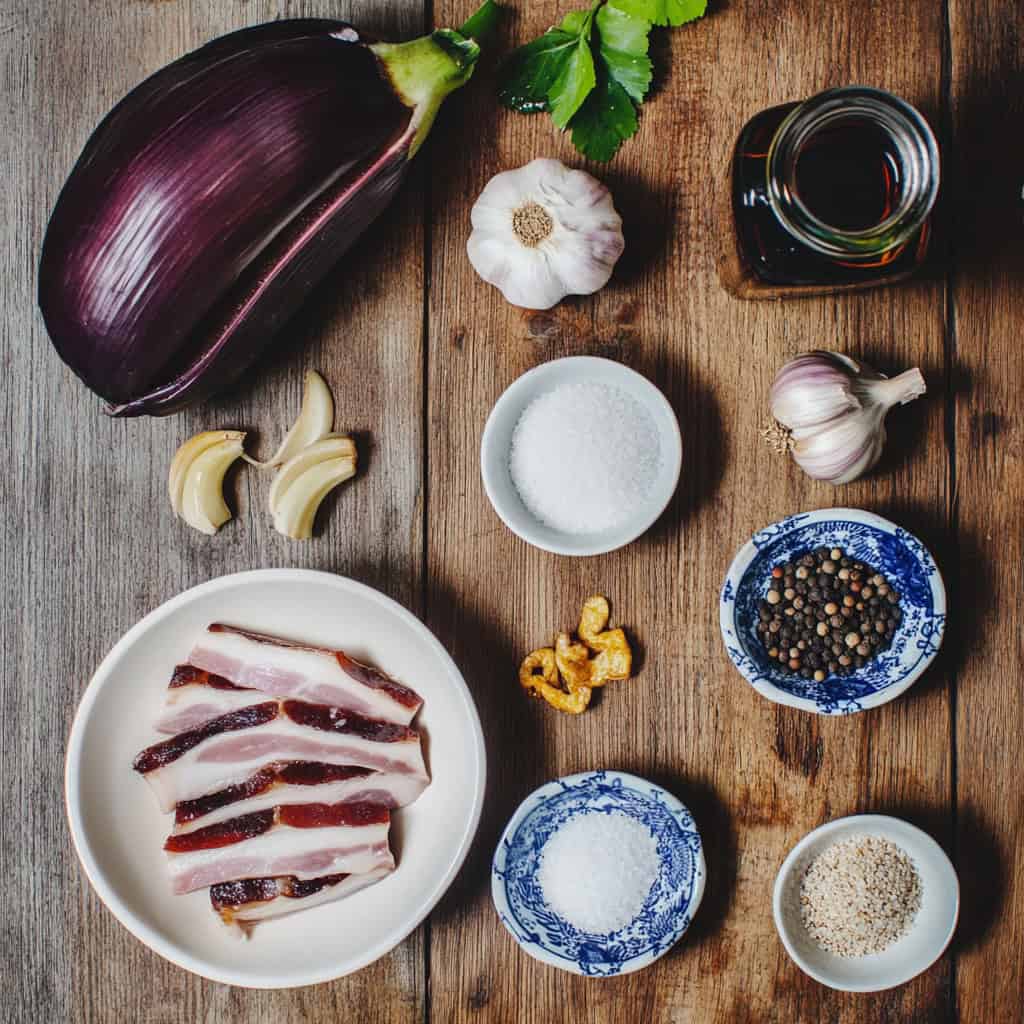
- 1 large banana blossom (puso ng saging)
- 150 g fatty pork sliced (liempo)
- ¼ cup soy sauce
- ⅓ cup cane vinegar
- ¼ cup water
- 6 cloves garlic, minced
- 2 shallots, minced
- Salt
- Freshly ground black pepper
- Cooking oil
Equipment
- Large pot (kaldero) - For boiling the banana blossom to remove bitterness and soften the texture
- Wok (kawali) - For the adobo cooking process, providing even heat distribution
- Sharp knife (kutsilyo) - For cleaning and slicing the banana blossom precisely
- Cutting board (Sangkalan) - For safe preparation of ingredients
- Colander (salaan) - For draining the boiled banana blossom effectively
- Measuring cups and spoons (Panukat) - For precise measurements of liquid ingredients
- Wooden spoon (sandok) - For stirring without scratching your cooking vessels
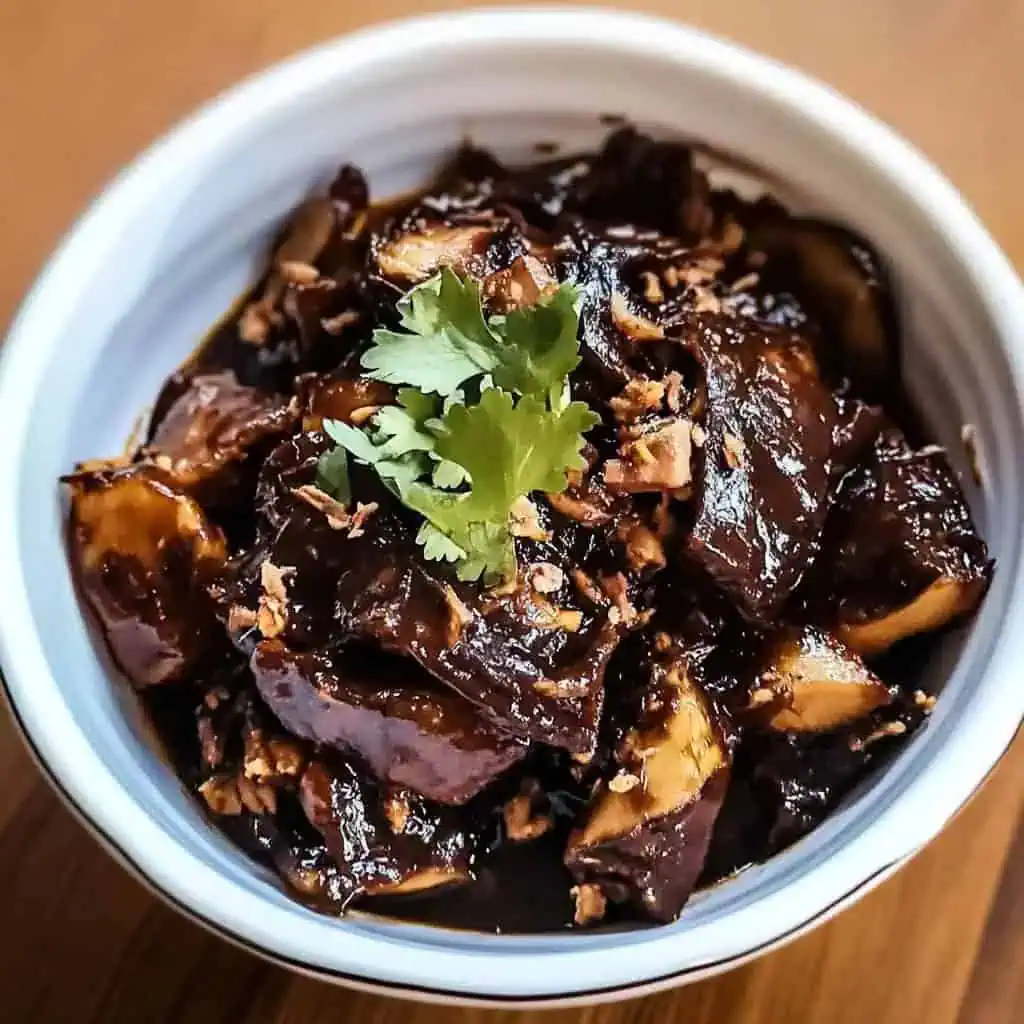
How To Make
- Prepare your banana blossom by removing all the dark red outer layers. Cut it into wedges. Rub some oil on your hands before handling to prevent staining.
- Fill a large pot with water and bring to a boil. Add the banana blossom wedges and boil for 30 minutes at medium-high heat, until tender when pierced with a fork. Drain well in a colander and let cool for 5-10 minutes. Once cool, slice into smaller, bite-sized pieces.
- Heat your wok over medium-high heat (175°C/350°F). Add oil and fry the pork pieces until golden brown, about 5-7 minutes. Add minced garlic and sauté until golden and fragrant, about 1-2 minutes. Add minced shallots and cook for another 2 minutes until they turn clear.
- Add the sliced banana blossom to the wok and stir-fry for 2 minutes, mixing well with the pork and aromatics. Pour in the soy sauce and vinegar. Important: Don't stir for the first 2 minutes to let the vinegar cook properly.
- After 2 minutes, stir everything together and lower heat to medium. Let it simmer for 5 minutes, stirring occasionally. If it looks dry, add water a spoonful at a time. Season with salt and black pepper to taste.
- Your dish is ready when the sauce has reduced slightly and the banana blossom is tender but still holds its shape. Let it rest for 5 minutes before serving with hot rice.

Tips from Lola's Kitchen
- Select the best blossoms - Choose banana blossoms that are firm and have tight, maroon-colored outer leaves for the freshest flavor.
- Prevent staining - Always rub your hands with oil before handling the banana blossom to prevent stubborn staining.
- Remove bitterness - Never skip the initial boiling process as this removes any bitter taste and softens the tough texture.
- Perfect adobo technique - When cooking with vinegar, let it boil first before stirring to achieve the right adobo flavor development.
- Control moisture - Keep some of the boiling liquid aside to add later if the dish becomes too dry during cooking.
- Test for tenderness - The banana blossom should be tender enough to pierce easily with a fork but still maintain its distinct texture.
- Allow resting time - Let the dish rest for 5 minutes before serving to allow flavors to meld together perfectly.
Substitutions
- Protein options - Instead of pork, you can use chicken thighs, firm tofu (pressed and cubed), or king oyster mushrooms sliced into strips.
- Vinegar varieties - If cane vinegar isn't available, substitute with apple cider vinegar or white vinegar (reduce amount by 1 tablespoon if using stronger vinegars).
- Allium alternatives - Red onions work well in place of shallots. If fresh garlic isn't available, use 2 teaspoons of garlic powder.
- Soy sauce alternatives - For a gluten-free version, use tamari or coconut aminos (though the latter will create a slightly sweeter profile).
- Vegetarian version - Skip the pork entirely and double the amount of mushrooms for a meaty texture. Add 1 tablespoon of nutritional yeast for umami depth.
Troubleshooting
- Too bitter? Boil the banana blossom twice, changing water in between boilings to remove more of the natural bitterness.
- Too salty? Add a sliced potato to absorb excess salt during simmering, then remove before serving. Alternatively, add a splash more water and a teaspoon of sugar to balance.
- Too dry? Add the reserved boiling water gradually while simmering to achieve desired consistency.
- Too sour? Balance with a pinch of sugar or a teaspoon of honey to round out the acidity.
- Banana blossom still tough? Continue simmering at low heat for an additional 10-15 minutes until tender. Proper pre-boiling is crucial.
- Sauce too thin? Simmer uncovered for an additional 5 minutes to reduce the liquid naturally.
Storage & Reheating
- Refrigeration - Store in an airtight container for up to 3 days. The flavor actually improves after a day as the banana blossom continues to absorb the adobo sauce.
- Freezing - Can be frozen for up to 1 month in a freezer-safe container. Thaw overnight in the refrigerator before reheating.
- Stovetop reheating - For best results, reheat in a pan over medium heat with a splash of water to prevent drying out. Heat until thoroughly hot (about 5-7 minutes).
- Microwave reheating - Heat for 2-3 minutes, stirring halfway through for even warming.
- Avoiding overcooking - Be careful not to reheat for too long as the banana blossom can become mushy.
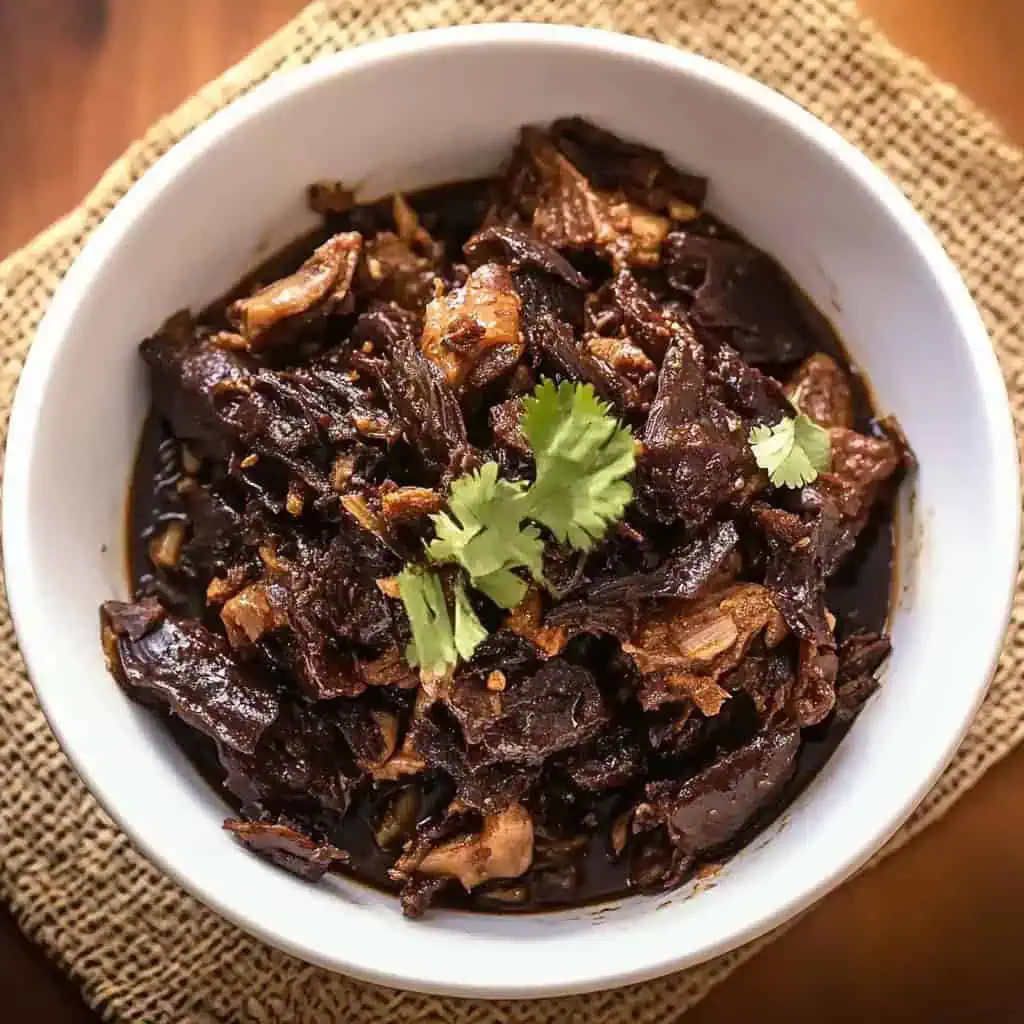
FAQ
Can I prepare the banana blossom in advance?
Yes, you can boil and slice it up to 24 hours ahead. Store in water in the refrigerator to prevent browning.
Why is my banana blossom turning brown?
This is normal oxidation, similar to what happens with apples or potatoes. Proceed with cooking as usual, and the color won't affect the taste.
Is banana blossom good for health?
Yes, it's rich in fiber, vitamins A and C, potassium, and antioxidants. It's also low in calories while providing a satisfying meaty texture.
Where can I find banana blossoms?
Fresh banana blossoms are available at Asian markets, Filipino grocery stores, and some well-stocked farmer's markets. You can also find them canned in brine at specialty food stores.
Can I make this completely vegetarian?
Absolutely! Skip the pork and use mushrooms instead. The banana blossom itself provides a meaty texture, and the adobo sauce will still create a delicious flavor profile.
How do I know if a banana blossom is fresh?
Look for firm blossoms with tightly packed, burgundy-colored outer leaves without brown spots or sliminess. They should feel heavy for their size.
Can I use the canned banana blossoms instead?
Yes, but drain and rinse them thoroughly to remove the brine. Skip the boiling step and reduce cooking time by about 10 minutes since canned blossoms are already tender.
What's the difference between banana blossom and banana heart?
They're actually the same thing—different regions use different terms. Both refer to the purple-skinned, teardrop-shaped flower that grows at the end of a banana fruit cluster.
Related
Looking for other recipes like this? Try these:
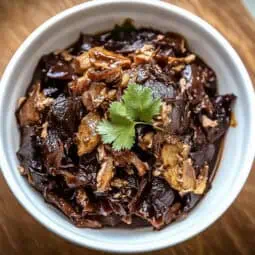
Adobong Puso ng Saging (Filipino Banana Blossom Adobo)
Equipment
- Large pot (kaldero) for boiling the banana blossom
- Wok (kawali) for the adobo cooking process
- Sharp knife (kutsilyo) for cleaning and slicing
- Cutting board (Sangkalan) for preparation
- Colander (salaan) for draining
- Measuring cups and spoons (Panukat) for precise measurements of ingredients
- Wooden spoon (sandok) for stirring
Ingredients
- 1 large banana blossom puso ng saging
- 150 g fatty pork sliced (liempo)
- ¼ cup soy sauce toyo
- ⅓ cup cane vinegar suka
- ¼ cup water tubig
- 6 cloves garlic minced (bawang)
- 2 shallots minced (sibuyas tagalog)
- Salt asin
- Freshly ground black pepper paminta
- Cooking oil mantika
Instructions
- First, prepare your banana blossom (puso ng saging) by removing all the dark red outer layers. Cut it into wedges. Rub some oil on your hands before handling to prevent staining.
- Fill a large pot with water and bring to a boil. Add the banana blossom wedges and boil for 30 minutes at medium-high heat, until tender when pierced with a fork. Drain well in a colander and let cool for 5-10 minutes. Once cool, slice into smaller, bite-sized pieces.
- Heat your wok over medium-high heat (175°C/350°F). Add oil and fry the pork pieces until golden brown, about 5-7 minutes. Add minced garlic and sauté until golden and fragrant, about 1-2 minutes. Add minced shallots and cook for another 2 minutes until they turn clear.
- Add the sliced banana blossom to the wok and stir-fry for 2 minutes, mixing well with the pork and aromatics. Pour in the soy sauce and vinegar. Important: Don't stir for the first 2 minutes to let the vinegar cook properly.
- After 2 minutes, stir everything together and lower heat to medium. Let it simmer for 5 minutes, stirring occasionally. If it looks dry, add water a spoonful at a time. Season with salt and black pepper to taste.
- Your dish is ready when the sauce has reduced slightly and the banana blossom is tender but still holds its shape. Let it rest for 5 minutes before serving with hot rice.
- For leftovers, let cool completely and store in a covered container in the refrigerator for up to 3 days. When reheating, add a splash of water and heat in a pan until hot throughout.
Tips from Lola's Kitchen
- Choose banana blossoms that are firm and have tight, maroon-colored outer leaves
- Rub your hands with oil before handling the banana blossom to prevent staining
- Don't skip the initial boiling process as this removes any bitter taste
- When cooking with vinegar, let it boil first before stirring to achieve the right adobo flavor
- Keep some of the boiling liquid to add later if needed
Nutrition
The Story Behind Adobong Puso ng Saging
In the lush landscapes of the Philippines, where banana trees grow abundantly in almost every backyard, our ancestors discovered something remarkable – the hidden culinary potential of the banana blossom, locally known as puso ng saging. This discovery speaks volumes about Filipino ingenuity and our deep-rooted practice of sustainable cooking, where no part of a plant goes to waste.
Adobong Puso ng Saging emerged from the intersection of two Filipino culinary traditions: our love for adobo cooking technique and our ability to transform humble ingredients into extraordinary dishes. While the exact origins of cooking banana blossoms in the Philippines aren't documented, the practice has been passed down through generations, particularly in rural areas where banana plantations flourish. Communities learned that the heart of the banana plant, when properly prepared, could provide a satisfying, meat-like texture that perfectly absorbs the bold flavors of adobo.
The dish gained prominence during times when meat was scarce or expensive. Resourceful Filipino cooks discovered that the banana blossom's firm, layered structure could mimic the texture of meat when cooked in the classic adobo style – a cooking method that combines vinegar, soy sauce, and garlic. This preparation not only preserved the banana blossom but also created a delicacy that would become a beloved vegetable dish across the archipelago.
Today, Adobong Puso ng Saging represents more than just a recipe – it's a testament to Filipino food wisdom. As modern diets shift toward plant-based alternatives and sustainable eating, this traditional dish has found new appreciation among health-conscious food lovers and environmental advocates alike. It's fascinating how our ancestors' practical solution to utilizing every part of the banana plant has become relevant in today's conversations about food sustainability and reducing waste.
The dish varies slightly from region to region, with some versions incorporating coconut milk for added richness, while others keep it simple and tangy. In some provinces, it's a popular meat-free option during Holy Week, while in others, it's an everyday dish that provides an affordable, nutritious meal for families. Whether served in humble countryside kitchens or upscale Filipino restaurants, Adobong Puso ng Saging continues to tell the story of Filipino culinary creativity and our deep connection to the land's bounty.
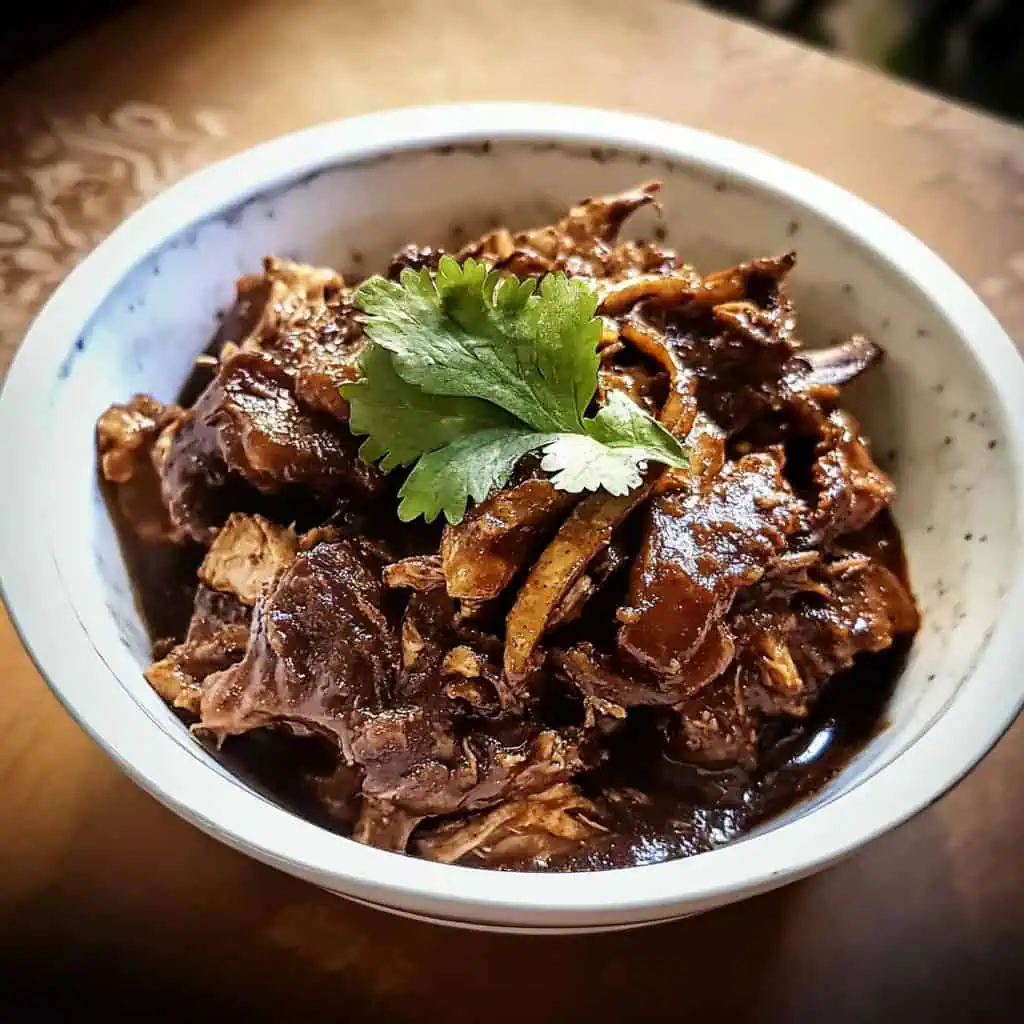









Comments
No Comments